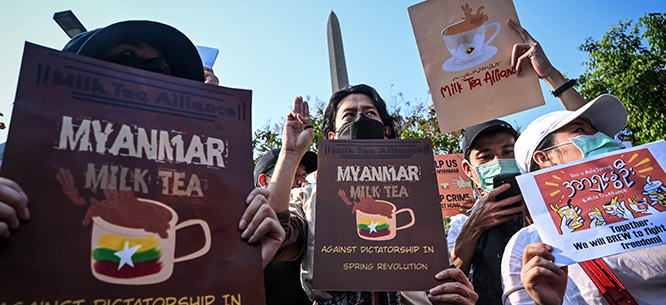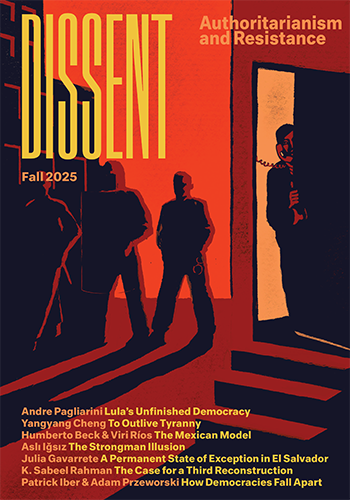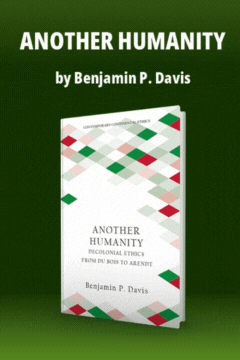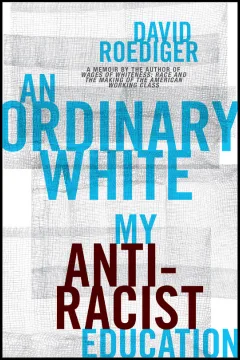The Struggle Against Autocracy in Asia
The Struggle Against Autocracy in Asia
An interview with Jeffrey Wasserstrom, author of The Milk Tea Alliance.

Many protest movements have featured colors and flowers. An iconic beverage is more unusual. Late-eighteenth-century Americans framed rebellions that were mostly about taxes around tea and whiskey. Young Asian activists in the early twenty-first century are using milk tea to talk about democracy and human rights. As Jeffrey Wasserstrom explains in his sharp new report, The Milk Tea Alliance: Inside Asia’s Struggle Against Autocracy and Beijing, the drink has become a regional symbol of solidarity shared by very different but nonetheless kindred movements.
In 2020, Wasserstrom’s Vigil: Hong Kong on the Brink anatomized a high-profile, high-powered revolt just after its peak. The Milk Tea Alliance includes lesser-known movements and a few of their leaders in Thailand and Burma. A possible third volume may focus on Taipei and Seoul, forming a trilogy on contemporary dissent in this swath of Asia. Despite the current impasse—repression in Hong Kong, civil war in Burma, quiescence in Thailand—Wasserstrom is still on the lookout for “surprising shifts.” Likewise in the United States, where growing popular mobilizations against authoritarianism are now drawing from a similar playbook.
Ross Perlin: How do you take your tea?
Jeff Wasserstrom: When it comes to milk tea drinks with ties to Asia, my favorite is chai. The term Milk Tea Alliance was initially coined in 2020 to refer to connections between some activists in Hong Kong, Taiwan, and Thailand, so it isn’t usually thought to include India. But the alliance is a flexible and overarching idea; at some points protesters in India, the Philippines, and other places have been considered at least honorary or temporary members. When protests broke out in Burma in 2021, activists there were welcomed into the alliance.
The music video for “Dictators Must Die” is a good case in point. A sort of Asia-focused hip-hop counterpart to “We Are the World,” the video was produced by the Burmese collective Rap Against Junta, whose name is an homage to Thailand’s Rap Against Dictatorship, and it also features Indonesian artists. The verses highlight general concerns shared by angry young people across Asia, while also bringing up local issues and mixing cosmopolitan and national gestures.
Perlin: Beyond the meme name, is there anything telling about the particular coordinates of this beverage?
Wasserstrom: The concept of the Milk Tea Alliance grew out of a common concern about Beijing’s rising influence across much of Asia, and a desire to protect or extend freedoms within different countries. The iconic tea drinks in Hong Kong, Taiwan, and Thailand each include a dairy element, while the conventional way to drink tea on the mainland is without milk. Early memes showed a trio of cups representing Hong Kong milky tea, Taiwanese bubble tea, and Thai Tea—very distinct drinks, though they share common traits—swearing allegiance to each other, like the Three Musketeers.
Perlin: With autocracy on the march across Asia and the world, why have Thailand, Hong Kong, and Burma—and not, for example, Singapore, Cambodia, and Indonesia—emerged as interconnected flashpoints?
Wasserstrom: One of my colleagues urged me to bring Singapore into the book, pointing to small-scale efforts to push back against autocracy there, sometimes by just a single individual taking personal risks. It is easy to imagine similar unrest in different parts of East or Southeast Asia in the coming years. If there’s one thing I’ve learned studying youth movements for about forty years now, having begun during my graduate school years at Berkeley (a fitting place to start working on the topic!), it is that there is no way to predict where the next dramatic wave of protests will occur.
I felt I needed to stick with a limited set of cases, and the book covers a very particular slice of time. Headlines and images coming out of Bangkok in 2020 and then Yangon in 2021 gave me flashbacks to Hong Kong in 2019. If the book had been a true instant history of the Milk Tea Alliance, finished before the coup took place in Burma early in 2021, I would probably have had a lot more to say in it about Taiwan. On the other hand, if I had finished later than November 2024, I might have nodded at least in passing to the extraordinary events happening in Seoul (although South Korea is not a place associated with milk tea).
Perlin: How does your geographic focus compare with other recent accounts, like Vincent Bevins’s If We Burn, which includes Occupy, the Arab Spring, and other movements of the past fifteen years?
Wasserstrom: If We Burn takes a bracingly global approach, not confined to any one part of the world. A decade before Bevins, Paul Mason published his tellingly titled take on the Occupy Wall Street and Arab Spring moment, Why It’s Kicking Off Everywhere: The New Global Revolutions.
I intentionally took a regional approach, looking at connections between settings near one another but not necessarily connected by language, religion, type of government, or dominant ideology. Take the events of 2019 in Hong Kong: a regional approach wouldn’t change the view that they were a failure, but it would show the extraordinary way that those protests added symbols and tactics to the global activist repertoire. This was particularly notable in nearby settings, such as Thailand.
By no means is this the only useful scale to work on. E.P. Thompson’s The Making of the English Working Class, whose title alerts readers to its tight geographical focus, helped spark my interest in studying protest as a college student, but so did Eric Hobsbawm’s Primitive Rebels, which moved around the world exploring what the author called “archaic forms of social movements.” These books share a concern with long-odds struggles.
Perlin: What about your focus on this particular “decade of dissent” from 2014 to 2024?
Wasserstrom: The regional approach and the temporal focus are complementary. Much can be missed by zooming in tightly on a single place or moment or by taking a wide-angle approach that spans the globe or ranges over centuries.
Take the Tiananmen struggle in China. Just as there have been works on a “Global 1919” and a “Global 1968,” Tiananmen has sometimes been fitted into a “Global 1989.” This approach has its strengths and weaknesses. It can lead to overstating the similarities between protests in China and to contemporaneous struggles in communist parts of Europe. In the process, analysts sometimes underappreciated how heavily Tiananmen activists drew from Chinese traditions of protest going back to the early twentieth century. They overlooked the ways that Chinese youths of 1989 differed from, say, Czechoslovakian ones, in that they were calling not for an end to Communist Party rule so much as for the CCP to live up to its own stated ideals—making them more like the participants in the Prague Spring than those in the Velvet Revolution.
Sticking within mainland China while thinking and writing about Tiananmen, on the other hand, can lead to overlooking the importance of support for the protests by people in Hong Kong, then still a British colony. It also makes it too easy to dismiss the Tiananmen events as a failure, pure and simple. A regional approach accounts for the useful lessons and perhaps additional space to work in for Taiwanese activists who later successfully pushed for democracy.
Perlin: To what extent do your findings fit a global mold—and what do you see as key lessons for the left and liberals outside Thailand, Hong Kong, and Burma?
Wasserstrom: A central theme in If We Burn is that even when movements succeed, they can produce results very different from what their participants had in mind; the Arab Spring provides some telling examples. A central theme in Rebecca Solnit’s new book No Straight Road Takes You There, on the other hand, is that some apparently failed or stalled struggles can move the needle forward. Her examples are from feminist and environmental movements.
I don’t take a definitive stance on this topic, but in a bit of a Goldilocks fashion try to be attentive to apparent successes that are followed by problematic shifts and apparent failures that are not the dead ends they first seem to be. In Burma, for example, what looked like a breakthrough in the 2010s turned out to be a false dawn of democracy. On the other hand, while the protest surge of the early 2020s in Thailand did not effect a reform of the use of draconian royal defamation laws, it did result in some other changes the activists called for, such as the legalization of same-sex marriage (the only other country in which it is legal in Asia is Taiwan). The struggles for democracy in Taiwan and South Korea failed and failed and failed, until they triumphed. Changes in global geopolitics helped, but so did the way unsuccessful surges chipped away at and gradually undermined the legitimacy of the established order.
Perlin: The United States is conspicuously absent from The Milk Tea Alliance. But the authoritarian crackdowns on student protest you describe feel increasingly, eerily familiar here.
Wasserstrom: The United States doesn’t come into the book much, but it is well-represented in one area: music. I already mentioned rap; I also bring up Thai activist Netiwit Chotiphatphaisal’s love of Pete Seeger, which led him and some of his friends to organize a small solidarity-building memorial concert for the activist and folk icon in Bangkok in 2014. Having American folk music come into a story about Southeast Asia felt right to me, as the first experience I had with protests was going to an anti–Vietnam War demonstration as a child where I heard Joan Baez perform.
Perlin: Unlike the United States, China features explicitly in the book—even in your subtitle, the Alliance’s struggle is “against autocracy and Beijing.” Leaving Hong Kong aside, how much is the CCP underwriting or inspiring autocracy across Asia, and how much is this reflected in both the protest movements and in the various government responses?
Wasserstrom: The CCP has a lot of influence over some places in the region, such as Laos, and less but still substantial influence over others, such as Burma. There are degrees of dependency. The Milk Tea Alliance emerged out of frustration at the CCP trying to force people to toe the line on its view of geography. Youths in Hong Kong, Taipei, and Bangkok were tired of Beijing’s efforts to stop companies from doing things like having Taiwan appear in a different color than the People’s Republic of China on maps, or to get celebrities to apologize for liking social media posts that referred to Taiwan as a “country” that was enjoyable to visit.
Perlin: What can be said about the Alliance’s political orientation?
Wasserstrom: There is no formal ideology, but there are some shared political concerns. For example, many members of the alliance are in favor of LGBTQ rights and concerned about environmental issues. There is a general interest in human rights and a distaste for the trend toward strongman rule.
Perlin: Some have characterized the Milk Tea Alliance as more meme than movement. Was there a special digital dimension here?
Wasserstrom: Novel technologies of communication always change political dynamics. They provide political actors with new methods of mobilizing and influencing people. This was true of the printing press, the telegraph, radio, television, and the internet. They also give defenders of the status quo powerful new ways to spread their messages. This is not the first era with cat-and-mouse games between censors and dissidents, and it won’t be the last.
All this means that it is foolish to underestimate the importance of media shifts, but we also need to guard against assuming they change everything. The Milk Tea Alliance story needs to be seen as a mix of the old and the new, the virtual and the in-person. It still matters that people take to the streets, even when calls for them to do so go out on Telegram rather than via pamphlets or morse code messages sent via telegrams. The kind of trust built up through face-to-face meetings is still crucial, even among people who first got to know each other exchanging text messages. And as important as playful memes were in the Thai protests of 2020–21, a group that printed and distributed books featuring the words of local activists and translations of Hannah Arendt and Václav Havel was part of the struggle’s story, too.
Perlin: Is there a coherent generational story here?
Wasserstrom: There definitely is. Key players were born digital, and then there is the role of symbols and songs linked to recent works of popular culture. There is also a generational shift in women playing more central roles in many recent East and Southeast Asian youth movements than in earlier decades. In addition, many of the young people agitating for change in Hong Kong in 2019 and Bangkok in 2020 expressed frustration that previous generations had been too restrained. “Let it end with this generation” was a main slogan in Thailand, and phrases like “You messed with the wrong generation” and more crudely worded versions of that sentiment show up in Milk Tea Alliance music videos. Some Milk Tea Alliance activists celebrate twentieth-century figures like Martin Luther King Jr., but they also express admiration for the boldness of Greta Thunberg.
I was glad to profile mostly Millennial and Gen Z activists in the book, except for one section where I bring in a veteran of the 1988 Burmese student uprising. There were costs, though, to this generational focus. Some of the conversations I had with older exiles (which I wish I could have mentioned in the book) might have brought into sharper relief features of the activists I do profile, such as their lack of commitment to a clearly spelled out ideology.
I did not, for example, find a way to discuss Jaran Ditapichai, who fled to France around half-a-century ago after participating in struggles in Thailand as a young Marxist. In 2023, he came to a small workshop on my book held at the Center for Critical Democracy Studies at the American University of Paris. When introducing himself, he said that while in his youth he was a communist, over the last few decades he has shifted to defining himself a human rights activist. There’s just one hard thing about being a human rights activist, he added, which is that you are supposed to love everyone—even the capitalists.
Perlin: Toward the end of the book, you take us to Tokyo’s Hibiya Park, which was a striking symbol of inter-Asian activist circuits more than a century ago. It was a time when some movements managed to topple monarchies and end colonial control. Does this suggest that the time of the Milk Tea Alliance is yet to come?
Wasserstrom: I don’t believe history has an arc that bends toward justice, but we should always be prepared for surprising shifts. It’s worth guarding against being hopeful, but also against giving in to hopelessness. Something similar, new but with familiar features, could emerge at a later point. Movements that seemed to have hit dead ends against systems of oppression were eventually able to make impressive strides toward democracy.
Ross Perlin is co-director of the Endangered Language Alliance. His latest book is Language City: The Fight to Preserve Endangered Mother Tongues in New York.
Jeffrey Wasserstrom is Chancellor’s Professor of History at the University of California, Irvine, and the author of The Milk Tea Alliance: Inside Asia’s Struggle Against Autocracy and Beijing.






